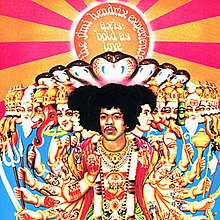Alternative/Indie Rock: Despite the common misconception of the two genres being perceived as different; the words are in fact interchangeable with one minor dissimilarity. This is that the term "indie" was for the most part associated with British-based music, whilst "alternative" was used for American.
Indie rock originated from the 1980's in the UK and has since grown a rather large audience as a result of it being a successful and illustrious genre. In addition to that there are many sub-genres which include: Britpop, Dream Pop, Indie Pop, Post-Punk Revival, as well as Post-Rock.
Alternative rock (also known as alternative music, alt-rock, or simply just alternative) derived from the independent music underground which became well known in the 1990's and 2000's. Sub-genres of alternative rock include: Grunge, Gothic Rock, Jangle Rock, Geek Rock, Paisley Underground, Neo-Psychedelia, College Rock, and Noise Rock. Alternative music also shares many of the sub-genres that belong to Indie music.
Indie Rock Artists Include: Nirvana, The Killers, Arctic Monkeys, Oasis, Florence + the Machine, Coldplay, Catfish and the Bottlemen, Kings of Leon, Bastille, Lana Del Rey, and M83.
Alternative Rock Artists Include: Nirvana, The Killers, Arctic Monkeys, Oasis, Coldplay, Catfish and the Bottlemen, Green Day, Red Hot Chili Peppers, Foo Fighters, Imagine Dragons, Muse, Fall Out Boy, U2, and Nothing But Thieves.
Features of Alternative/Indie Rock Magazines: After analysing and observing many music magazines I have gained an understanding of popular characteristics with magazines of certain genres. For instance, popular music magazines that also feature Hip Hop, Dance, R "n" B and so on tend to have vibrant colours against simple backgrounds with a minimal colour palette. This exaggerates the vibrancy of the tones which can lead to a really eye-catching cover and also emphasise certain topics on the magazine; this is a very effective technique which I have seen being used by publishers like Q, Rolling Stone, Billboard and Vibe.
- Anchorage text (this is where the artist on the cover's name is in a large text that is typically placed on top of them) is once again a very popular feature, which can be seen in the Q, Rolling Stone and Billboard covers above.
- Skylines also allow for bonus information that doesn't need to take up a lot of space to have a place on the cover. Creating a clean and organised appearance skylines can be subtle but advantageous.
- Generally music magazines appear to have a red, black and white accent, which can be seen above in all of the examples. This is a result of the colour popping off the simplistic colours, for example Minaj on the cover of Vibe really stands out due to her bright orange hair, which draws in potential readers, against the white background.
- Finally a bold masthead is very popular within the production of music magazines; whilst the entire title does not need to be on show it most certainly adds something to the magazine. Although some of the mastheads above are partially hidden because of how well known they are, meaning that an individual should recognise it despite the missing letters, doing this allows for more room but also for the main focus to be on the artist. At the end of the day this is the publisher's objective simply because fans will be attracted by the artist, buy it and contribute to the company's ever growing profit.




